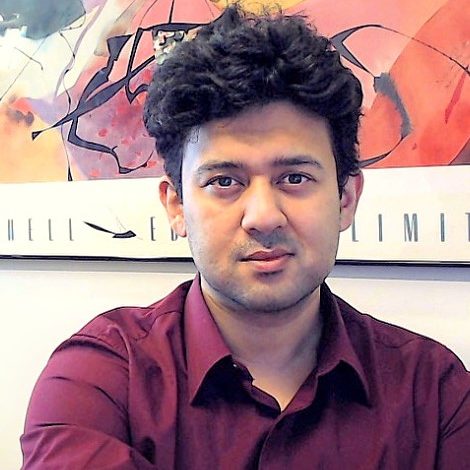
Professor Kohitij Kar in the Department of Biology is among 28 early-career researchers who received grants valued at $100,000 from Brain Canada’s Future Leaders in Canadian Brain Research program. His project will combine neuroscience and artificial intelligence (AI) studies of vision into autism research.
Kar, a Canada Research Chair in Visual Neuroscience, combines machine learning and neuroscience to better understand visual intelligence. His new project funded by Brain Canada will explore these intersections in the context of autism.
“The ability to recognize other people’s moods, emotions, and intent from their facial expressions differs in autistic children and adults,” says Kar. “Our project will introduce a new, vastly unexplored direction of combining AI models of vision into autism research – which could be used to inform cognitive therapies and other approaches to better nurture autistic individuals.”
Based on prior funding from the Simons Foundation Autism Research Initiative (SFARI), Kar’s research team at York University has been developing a non-human primate model of facial emotion recognition in autism. The machine learning based models the team will use are called artificial neural networks (ANN), which mimic the way the brain operates and processes information. Kar will develop models that predict at an image-by-image level how primates represent facial emotions across different parts of their brain and how such representations are linked to their performance in facial emotion judgment tasks. They will then use state-of-the-art methods developed by their team to finetune the ANNs to align them more with the performance of neurotypical brains and those of an autistic adult.
The second part of Kar’s project will focus on using the updated ANNs to reverse-engineer images that could potentially be used to help autistic adults to match their facial emotion judgments to that of the neurotypically developed adults. This work builds on his previous research (published in the journal Science), which showed that ANNs can be used to construct images that broadly activate large populations of neurons or selectively activate one population while keeping the others unchanged, to achieve a desired effect on the visual cortex. In this project, he will shift the target objective from neurons to a clinically relevant behavior.
Brain Canada’s Future Leaders in Canadian Brain Research program aims to accelerate novel and transformative research that will fundamentally change our understanding of nervous system function and dysfunction and their impact on health. It has been made possible by the Canada Brain Research Fund, an innovative arrangement between the Government of Canada (through Health Canada) Brain Canada Foundation and the Azrieli Foundation, with support from The Erika Legacy Foundation, The Arrell Family Foundation, the Segal Foundation, and the Canadian Institutes of Health Research.
